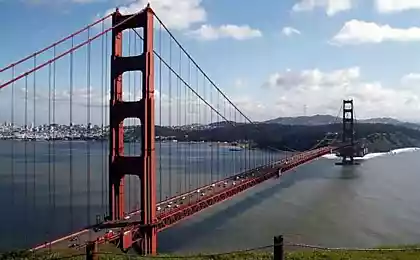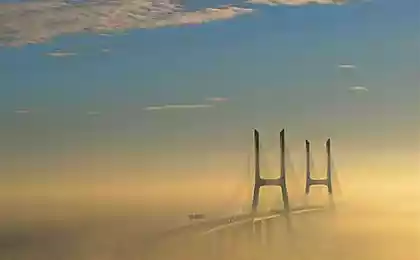844
Vasco da Gama
Vasco da Gama bridge - the longest bridge in Europe, its length is 17 km 2
Cable-stayed bridge over the Tagus River to the north-east of Lisbon, Portugal, was opened on 29 March 1998, 18 months after construction began.
The project was divided into four parts, all of them were built by different companies, managed the construction of an independent consortium. Directly involved in the construction of the bridge 3300 workers. The design of the bridge is designed for operation for 120 years, to withstand winds up to 250 km / h and the earthquake in 4, 5 times stronger than the famous 1755 Lisbon earthquake. (CarlaBritoFotografia)
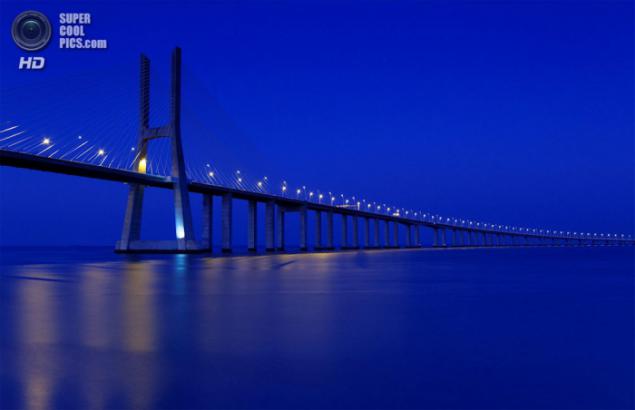
The deepest piles are 2, 2 meters in diameter, they are immersed to a depth of 95 m below sea level. Due to the great length of the bridge had to take into account the sphericity of the Earth for the proper conduct of construction work, otherwise an error in the design of the bridge in height between the opposite ends thereof would have reached 80 cm. (Paulo Guerra)

To reduce the environmental impact of the bridge viaduct was built as far as possible to the second shore in order to remain below the natural environment, in addition, the lighting has been designed in such a way that the light bulbs did not get to the river. (F H Mira)
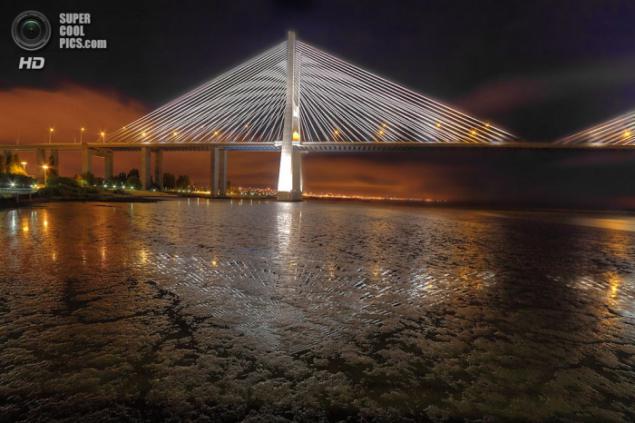
The bridge was built with private funds; Consortium Lusoponte, to finance the construction, received a concession for 40 years and has a right to collect tolls both Lisbon bridges. Capital Lusoponte is 50, 4% of the contributions of Portuguese, 24, 8% - French and 24, 8% of British companies. (F H Mira)
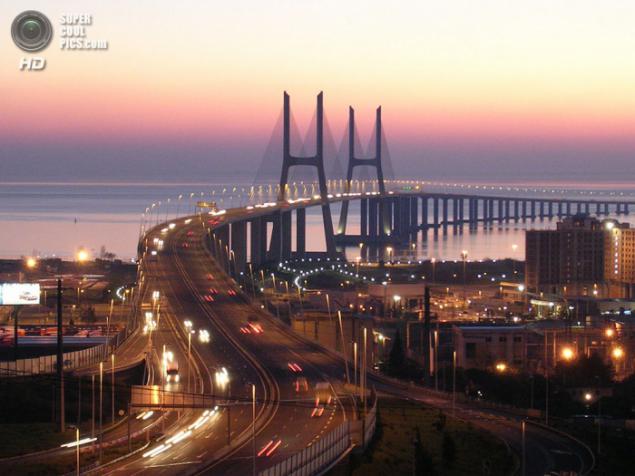
Since 2008 the fare on the bridge is € 2, 25 per car and up to € 10, 1 for cargo while driving north to Lisbon. The fare to the south are not available. (MANUEL DUARTE)
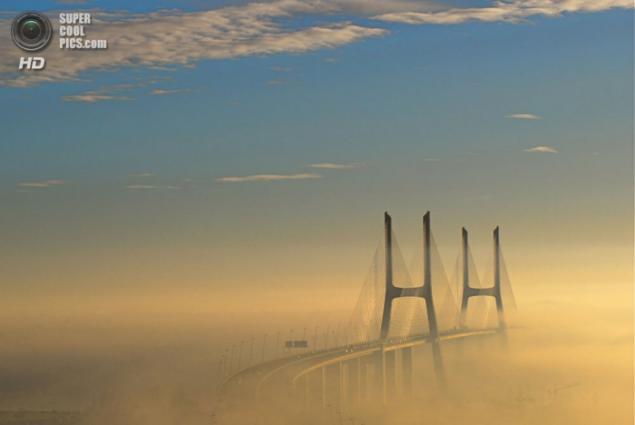
Portugal. Lisbon. Vasco da Gama Bridge. (Frederik Fredslund-Andersen)
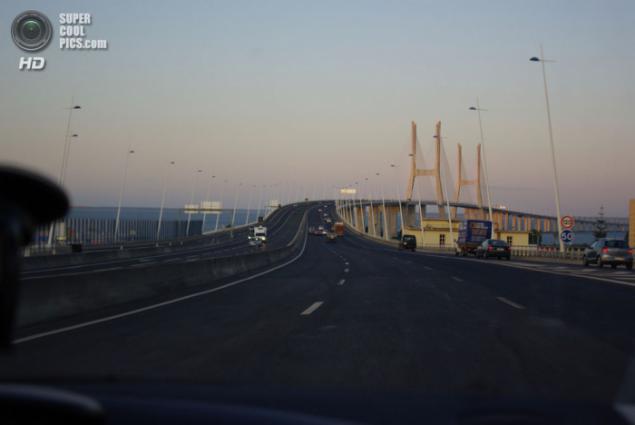
Portugal. Lisbon. Vasco da Gama Bridge. (Burkhard Westphal)
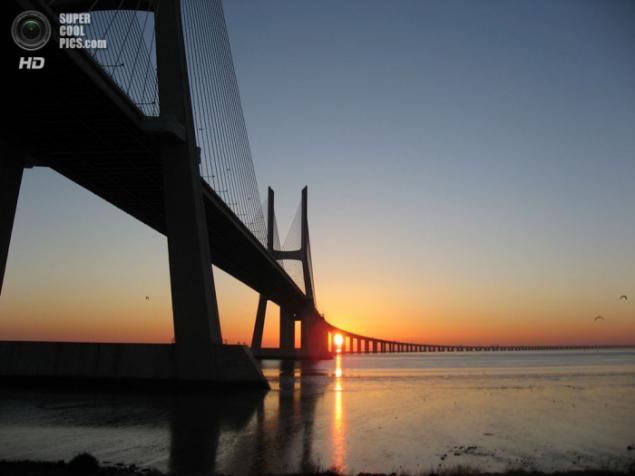
Portugal. Lisbon. Vasco da Gama Bridge. (MANUEL DUARTE)

©
Cable-stayed bridge over the Tagus River to the north-east of Lisbon, Portugal, was opened on 29 March 1998, 18 months after construction began.
The project was divided into four parts, all of them were built by different companies, managed the construction of an independent consortium. Directly involved in the construction of the bridge 3300 workers. The design of the bridge is designed for operation for 120 years, to withstand winds up to 250 km / h and the earthquake in 4, 5 times stronger than the famous 1755 Lisbon earthquake. (CarlaBritoFotografia)

The deepest piles are 2, 2 meters in diameter, they are immersed to a depth of 95 m below sea level. Due to the great length of the bridge had to take into account the sphericity of the Earth for the proper conduct of construction work, otherwise an error in the design of the bridge in height between the opposite ends thereof would have reached 80 cm. (Paulo Guerra)

To reduce the environmental impact of the bridge viaduct was built as far as possible to the second shore in order to remain below the natural environment, in addition, the lighting has been designed in such a way that the light bulbs did not get to the river. (F H Mira)

The bridge was built with private funds; Consortium Lusoponte, to finance the construction, received a concession for 40 years and has a right to collect tolls both Lisbon bridges. Capital Lusoponte is 50, 4% of the contributions of Portuguese, 24, 8% - French and 24, 8% of British companies. (F H Mira)

Since 2008 the fare on the bridge is € 2, 25 per car and up to € 10, 1 for cargo while driving north to Lisbon. The fare to the south are not available. (MANUEL DUARTE)

Portugal. Lisbon. Vasco da Gama Bridge. (Frederik Fredslund-Andersen)

Portugal. Lisbon. Vasco da Gama Bridge. (Burkhard Westphal)

Portugal. Lisbon. Vasco da Gama Bridge. (MANUEL DUARTE)

©

